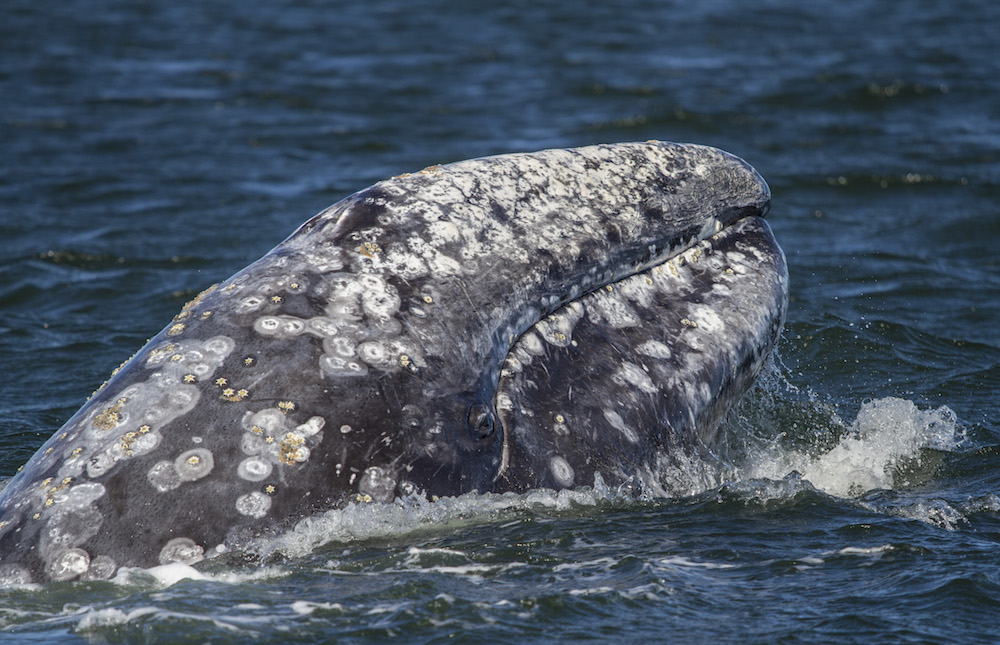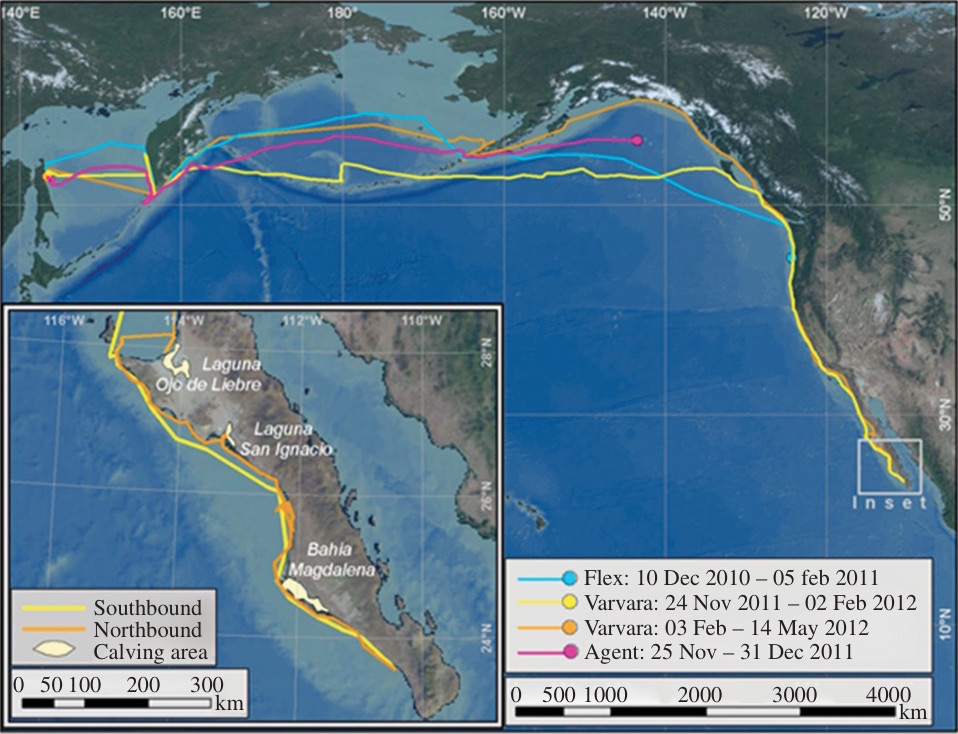Gray Whale Breaks Mammal Migration Record

The western gray whale now holds the record as the mammal with the longest known migration, researchers say.
A female western gray whale swam from Russia to Mexico and back again — a total of 13,988 miles (22,511 kilometers) — in 172 days, according to a new report.
Until now, the title of the longest-migrating mammal belonged to the humpback whale (Megaptera novaeangliae), which migrates up to 10,190 miles (16,400 km) round trip as it travels between its breeding grounds near the equator and the food-rich waters of the Arctic and Antarctic, according to Guinness World Records.
But the new report shows that a female western gray whale (Eschrichtius robustus) named Vavara (the Russian equivalent of the name Barbara), has stolen the record. Researchers placed satellite-monitoring tags on seven western gray whales living off Russia's Sakhalin Island, where the mammals feed every year. Vavara was the only whale whose tag stayed intact throughout the entire journey, said the study's lead researcher, Bruce Mate, the director of the Marine Mammal Institute at Oregon State University. [Quest for Survival: Photos of Incredible Animal Migrations]
Western gray whales are critically endangered; they were once even thought to be extinct, Mate said. Before the new study, little was known about these animals' migratory paths, and many researchers suspected that the whales migrated in a loop from Russia to the South China Sea.
Instead, the tagging study shows that Vavara swam to Mexico.
"She crossed the Bering Sea, the Gulf of Alaska [and] the lengths of the North American continent to get down to the Baja breeding calf lagoons that are used by eastern North Pacific animals," Mate said.
Sign up for the Live Science daily newsletter now
Get the world’s most fascinating discoveries delivered straight to your inbox.
Western or eastern?
Curiously, the western gray whale's cousin, the eastern gray whale, also swims off the coast of Baja California in Mexico. Eastern gray whales are not endangered, Mate said. It's entirely possible that Vavara and the six other whales that Mate and his team tracked are actually eastern gray whales that had migrated westward all the way to Russia, he said.

It's also possible what researchers have thought of as two whale groups, western and eastern, are actually a single whale species, although more research is needed to know for sure, Mate said.
Evidence from photographs of whales taken by whale researchers also suggests they are just one group. For example, 10 western gray whales spotted in Russia have been photographed near British Columbia and Baja California, Mexico, the researchers said in the study.
Research on the genes of two whales also supports the idea that these two whale groups are actually one.
What's more, two other western gray whales, Agent and Flex, tagged by Mate and his colleagues took migration routes similar to Vavara's. However, Agent's tag stopped working in the Gulf of Alaska, and Flex's tag conked out near Lincoln City, Oregon.
Perhaps the whales currently thought of as western gray whales came from the population of gray whales once thought to be extinct, Mate said. Or, maybe they are actually eastern gray whales that expanded their range once the western gray whales disappeared.
"It's a question that still needs to be addressed," Mate said. "It's still under investigation."
Vavara's journey
Several aspects of Vavara's journey caught the researchers' attention. For one thing, she didn't follow the same exact route on her way there and back. This suggests that she knew the general way, and didn't need to hug the coast to orient herself.
"My respect for navigational skills in gray whales has changed tremendously," Mate told Live Science.
It also appears that Vavara did not stop to feed during her 5.5-month migration. Like other baleen whales (whales that have baleen plates in their mouths that filter food), gray whales typically don't eat during migration, Mate said.
"These animals do well enough feeding in Russia to sustain a migration that's pretty extreme," Mate said.
The study is published in the April 15 (Wednesday) online edition of the journal Biology Letters.
Follow Laura Geggel on Twitter @LauraGeggel. Follow Live Science @livescience, Facebook & Google+. Original article on Live Science.

Laura is the archaeology and Life's Little Mysteries editor at Live Science. She also reports on general science, including paleontology. Her work has appeared in The New York Times, Scholastic, Popular Science and Spectrum, a site on autism research. She has won multiple awards from the Society of Professional Journalists and the Washington Newspaper Publishers Association for her reporting at a weekly newspaper near Seattle. Laura holds a bachelor's degree in English literature and psychology from Washington University in St. Louis and a master's degree in science writing from NYU.









